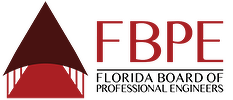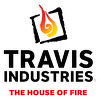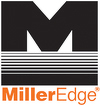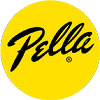
Florida Board of Professional Engineers
With almost 44,000 active licensed engineers in the state, the Florida Board of Professional Engineers (FBPE) is committed to protecting the interest of public health and safety by properly regulating the practice of engineering.
Click to Learn More About the Florida Board of Professional Engineers
Scan this code with your mobile device camera to take this page on-the-go!

https://redirect.aecdaily.com/s473431/www.aecdaily.com/course/873972

 Concrete is a very versatile and fundamental building material; however, because it is porous and wicks water through its matrix, concrete has water-related design challenges. This program examines the sustainable benefits of integral concrete waterproofing and analyzes traditional waterproofing methods as compared to integral methods in terms of performance, durability, risk, cost, and construction timeline.
Concrete is a very versatile and fundamental building material; however, because it is porous and wicks water through its matrix, concrete has water-related design challenges. This program examines the sustainable benefits of integral concrete waterproofing and analyzes traditional waterproofing methods as compared to integral methods in terms of performance, durability, risk, cost, and construction timeline.
Scan this code with your mobile device camera to take this page on-the-go!

https://redirect.aecdaily.com/s616041/www.aecdaily.com/course/1048990

 Building owners have come to rely on weatherable coatings to provide long-term protection to their buildings. With an increased focus on sustainability, performance, and durability, PVDF resin-based coatings can help architects and painting contractors exceed their clients’ design goals. This course covers the key components and functions of high-performance weatherable coatings and looks at how these coatings contribute to sustainable design.
Building owners have come to rely on weatherable coatings to provide long-term protection to their buildings. With an increased focus on sustainability, performance, and durability, PVDF resin-based coatings can help architects and painting contractors exceed their clients’ design goals. This course covers the key components and functions of high-performance weatherable coatings and looks at how these coatings contribute to sustainable design.
Scan this code with your mobile device camera to take this page on-the-go!

https://redirect.aecdaily.com/s4887/www.aecdaily.com/course/896266

 Structural laminated decking allows the beauty of the wood structure to be exposed, creating a unique architectural experience for its occupants. Aesthetics, strength, and durability are combined in one engineered product. Structural laminated wood decking is an environmentally sustainable and cost-effective alternative to solid timber and other roof systems. This course discusses the characteristics of laminated wood decking and reviews recommended design, specification, and installation practices.
Structural laminated decking allows the beauty of the wood structure to be exposed, creating a unique architectural experience for its occupants. Aesthetics, strength, and durability are combined in one engineered product. Structural laminated wood decking is an environmentally sustainable and cost-effective alternative to solid timber and other roof systems. This course discusses the characteristics of laminated wood decking and reviews recommended design, specification, and installation practices.
Scan this code with your mobile device camera to take this page on-the-go!

https://redirect.aecdaily.com/s8769/www.aecdaily.com/course/1000167

 Architectural railing systems offer safety, durability, strength, and design flexibility for a variety of indoor and outdoor applications. This course provides an overview of the important factors that need to be considered when selecting and specifying a railing system for a commercial or residential building project. Topics include materials and finishes, fabrication and installation, and relevant building codes and standards.
Architectural railing systems offer safety, durability, strength, and design flexibility for a variety of indoor and outdoor applications. This course provides an overview of the important factors that need to be considered when selecting and specifying a railing system for a commercial or residential building project. Topics include materials and finishes, fabrication and installation, and relevant building codes and standards.
Scan this code with your mobile device camera to take this page on-the-go!

https://redirect.aecdaily.com/s14550/www.aecdaily.com/course/1124046

 Deck railing systems provide the finishing touch to an outdoor area, as well as safety and improved accessibility. Choosing a system that suits a deck project’s needs depends on a variety of factors, including cost, durability, style, customization, maintenance, and eco-friendliness. This course explores the many railing materials that are available, with a focus on aluminum, composite, and aluminum and composite railing systems, whose characteristics are ideal for most projects.
Deck railing systems provide the finishing touch to an outdoor area, as well as safety and improved accessibility. Choosing a system that suits a deck project’s needs depends on a variety of factors, including cost, durability, style, customization, maintenance, and eco-friendliness. This course explores the many railing materials that are available, with a focus on aluminum, composite, and aluminum and composite railing systems, whose characteristics are ideal for most projects.
Scan this code with your mobile device camera to take this page on-the-go!

https://redirect.aecdaily.com/s420795/www.aecdaily.com/course/874439

 The construction of residential and commercial buildings that use less energy to operate and are long lived is a key part of sustainable design. Insulated concrete forms (ICFs) provide the necessary U-factor, airtightness, resiliency, and durability for all building types. Insulated concrete forms in residential and commercial construction projects offer excellent thermal performance and reduced energy consumption and operating costs, while maintaining a very comfortable and healthy interior environment. This course examines the ICF wall, including materials and components, and discusses design considerations and construction.
The construction of residential and commercial buildings that use less energy to operate and are long lived is a key part of sustainable design. Insulated concrete forms (ICFs) provide the necessary U-factor, airtightness, resiliency, and durability for all building types. Insulated concrete forms in residential and commercial construction projects offer excellent thermal performance and reduced energy consumption and operating costs, while maintaining a very comfortable and healthy interior environment. This course examines the ICF wall, including materials and components, and discusses design considerations and construction.
Scan this code with your mobile device camera to take this page on-the-go!

https://redirect.aecdaily.com/s14532/www.aecdaily.com/course/1138134

 Traditional and modern, linear direct vent gas fireplaces safely provide supplemental heat while preserving indoor air quality. The course explores gas fireplace venting systems and heater- and decorative-rated fireplace options, electric fireplace options, functions, aesthetics, and applications. Also discussed are innovative technologies that enhance performance, applicable codes and standards, safety requirements and precautions, and size considerations.
Traditional and modern, linear direct vent gas fireplaces safely provide supplemental heat while preserving indoor air quality. The course explores gas fireplace venting systems and heater- and decorative-rated fireplace options, electric fireplace options, functions, aesthetics, and applications. Also discussed are innovative technologies that enhance performance, applicable codes and standards, safety requirements and precautions, and size considerations.
Scan this code with your mobile device camera to take this page on-the-go!

https://redirect.aecdaily.com/s727499/www.aecdaily.com/course/852694

 Green facades can contribute to building energy efficiency, durability, aesthetic value, sustainability, and cost effectiveness in the performance of ecological system services. This course examines the considerations required for successful green facade installations and includes discussions on system selection, design, plant selection, maintenance, and client/owner education.
Green facades can contribute to building energy efficiency, durability, aesthetic value, sustainability, and cost effectiveness in the performance of ecological system services. This course examines the considerations required for successful green facade installations and includes discussions on system selection, design, plant selection, maintenance, and client/owner education.
Scan this code with your mobile device camera to take this page on-the-go!

https://redirect.aecdaily.com/s9812/www.aecdaily.com/course/1087914

 Motorized doors in industrial and warehousing environments provide convenience, save time, and increase productivity but also carry the risk of entrapment. This course explains the need for entrapment protection devices on motorized commercial and industrial doors and discusses how to specify the appropriate safety products and monitoring functions to meet code requirements. It also stresses the importance of designing safety features into specifications to minimize the risk factors for specific building projects.
Motorized doors in industrial and warehousing environments provide convenience, save time, and increase productivity but also carry the risk of entrapment. This course explains the need for entrapment protection devices on motorized commercial and industrial doors and discusses how to specify the appropriate safety products and monitoring functions to meet code requirements. It also stresses the importance of designing safety features into specifications to minimize the risk factors for specific building projects.
Scan this code with your mobile device camera to take this page on-the-go!

https://redirect.aecdaily.com/s789181/www.aecdaily.com/course/1123655

 This course explains and illustrates how high-performance, fully composite insulated precast sandwich wall panels can be designed and specified to manage aesthetics, quality, performance, and cost. It explores the pros, cons, and attributes of wythe connectors such as carbon fiber reinforced polymer (CFRP) grid trusses, options for achieving continuous insulation, manufacturing and testing procedures, and strategies for managing costs. It concludes by providing illustrative sample installations to demonstrate the broad range of building types and appearances that can be created with insulated precast enclosures.
This course explains and illustrates how high-performance, fully composite insulated precast sandwich wall panels can be designed and specified to manage aesthetics, quality, performance, and cost. It explores the pros, cons, and attributes of wythe connectors such as carbon fiber reinforced polymer (CFRP) grid trusses, options for achieving continuous insulation, manufacturing and testing procedures, and strategies for managing costs. It concludes by providing illustrative sample installations to demonstrate the broad range of building types and appearances that can be created with insulated precast enclosures.
Scan this code with your mobile device camera to take this page on-the-go!

https://redirect.aecdaily.com/s443055/www.aecdaily.com/course/570420

 Provides an overview of the types, features, and benefits of designing with cellular PVC trim, including a discussion on the installation guidelines and manufacturing processes.
Provides an overview of the types, features, and benefits of designing with cellular PVC trim, including a discussion on the installation guidelines and manufacturing processes.
Scan this code with your mobile device camera to take this page on-the-go!

https://redirect.aecdaily.com/s574478/www.aecdaily.com/course/800190

 Railing systems perform various functions, meeting safety requirements and serving as a key component of a building’s aesthetic. This course includes a discussion of the strengths and weaknesses of aluminum and structural vinyl railing systems, how they are made, and how they are used in the building industry, including a detailed summary of how they meet various code requirements.
Railing systems perform various functions, meeting safety requirements and serving as a key component of a building’s aesthetic. This course includes a discussion of the strengths and weaknesses of aluminum and structural vinyl railing systems, how they are made, and how they are used in the building industry, including a detailed summary of how they meet various code requirements.
Scan this code with your mobile device camera to take this page on-the-go!

https://redirect.aecdaily.com/s686798/www.aecdaily.com/course/884142

 Ensuring proper use of methods and materials allows masonry walls to perform well and enjoy a long life. Use of masonry joint reinforcement and accessories is an essential part of this. This course provides a brief history of solid masonry walls leading up to the modern cavity walls of today, including a discussion of the basic working knowledge of masonry joint reinforcing, structural codes, and moisture control in cavity wall construction.
Ensuring proper use of methods and materials allows masonry walls to perform well and enjoy a long life. Use of masonry joint reinforcement and accessories is an essential part of this. This course provides a brief history of solid masonry walls leading up to the modern cavity walls of today, including a discussion of the basic working knowledge of masonry joint reinforcing, structural codes, and moisture control in cavity wall construction.
Scan this code with your mobile device camera to take this page on-the-go!

https://redirect.aecdaily.com/s13907/www.aecdaily.com/course/903646

 Concrete-faced insulated products are composite prefinished panels that are used to construct walls and roofing assemblies to maximize the energy efficiency, durability, and performance of a building envelope. This course discusses the design criteria used in designing energy-efficient buildings using concrete-faced continuous insulation systems for low-slope roofing, walls, and foundations. The functional and physical features of protective membrane roof (PMR) systems, concrete-faced insulated panels for walls and foundations, and concrete structural insulated panels (CSIPs) are evaluated.
Concrete-faced insulated products are composite prefinished panels that are used to construct walls and roofing assemblies to maximize the energy efficiency, durability, and performance of a building envelope. This course discusses the design criteria used in designing energy-efficient buildings using concrete-faced continuous insulation systems for low-slope roofing, walls, and foundations. The functional and physical features of protective membrane roof (PMR) systems, concrete-faced insulated panels for walls and foundations, and concrete structural insulated panels (CSIPs) are evaluated.
Scan this code with your mobile device camera to take this page on-the-go!

https://redirect.aecdaily.com/s904648/www.aecdaily.com/course/1091537

 Fire safety is an important building enclosure design factor and needs to be addressed hand-in-hand with energy code requirements. NFPA 285 is a critical consideration with modern building assemblies incorporating combustible materials in noncombustible construction. This presentation reviews the history and scope of the NFPA 285 test standard and its adoption into the International Building Code® (IBC®). The compliance criteria are outlined, and triggers and contributors under the standard are identified. The course also reviews how the selection of building components such as insulation, air-/water-resistive barriers, and claddings affects the fire performance of an assembly, and solutions and common paths for compliance are presented.
Fire safety is an important building enclosure design factor and needs to be addressed hand-in-hand with energy code requirements. NFPA 285 is a critical consideration with modern building assemblies incorporating combustible materials in noncombustible construction. This presentation reviews the history and scope of the NFPA 285 test standard and its adoption into the International Building Code® (IBC®). The compliance criteria are outlined, and triggers and contributors under the standard are identified. The course also reviews how the selection of building components such as insulation, air-/water-resistive barriers, and claddings affects the fire performance of an assembly, and solutions and common paths for compliance are presented.
Scan this code with your mobile device camera to take this page on-the-go!

https://redirect.aecdaily.com/s806330/www.aecdaily.com/course/827398

 Vacuum insulation panels (VIPs) offer higher thermal resistance per unit thickness than traditional insulation materials. This means a building envelope can meet the effective R-values for enclosures required by the energy codes without having to increase the thickness of the walls, roof, or floors. This course discusses how VIPs work, why they are effective, and the impact the properties of the materials used to construct a VIP can have on its performance. VIP installations and the latest developments in VIP technology are reviewed to illustrate the advantages of using VIPs as thermal insulation in the design of energy-efficient buildings.
Vacuum insulation panels (VIPs) offer higher thermal resistance per unit thickness than traditional insulation materials. This means a building envelope can meet the effective R-values for enclosures required by the energy codes without having to increase the thickness of the walls, roof, or floors. This course discusses how VIPs work, why they are effective, and the impact the properties of the materials used to construct a VIP can have on its performance. VIP installations and the latest developments in VIP technology are reviewed to illustrate the advantages of using VIPs as thermal insulation in the design of energy-efficient buildings.
Scan this code with your mobile device camera to take this page on-the-go!

https://redirect.aecdaily.com/s9727/www.aecdaily.com/course/870419

 The modern aesthetic of metal facades is in high demand for applications ranging from education, healthcare, and office to residential and multistory mixed use. Recent high-profile fires have reinforced the importance of choosing the right metal cladding system that meets thermal performance requirements while not compromising life safety. This course compares various core materials and focuses on what the code requires for metal cladding in terms of fire performance testing and results and includes case studies from fire events around the globe.
The modern aesthetic of metal facades is in high demand for applications ranging from education, healthcare, and office to residential and multistory mixed use. Recent high-profile fires have reinforced the importance of choosing the right metal cladding system that meets thermal performance requirements while not compromising life safety. This course compares various core materials and focuses on what the code requires for metal cladding in terms of fire performance testing and results and includes case studies from fire events around the globe.
Scan this code with your mobile device camera to take this page on-the-go!

https://redirect.aecdaily.com/s1078641/www.aecdaily.com/course/1083010

 Solid surface material is a durable and sustainable solution for custom architectural solutions. Explore the extensive design possibilities of this nonporous, thermoformable material and review key performance characteristics and fabrication guidelines.
Solid surface material is a durable and sustainable solution for custom architectural solutions. Explore the extensive design possibilities of this nonporous, thermoformable material and review key performance characteristics and fabrication guidelines.
Scan this code with your mobile device camera to take this page on-the-go!

https://redirect.aecdaily.com/s15106/www.aecdaily.com/course/947826

 Fenestration openings are a critical component of a building envelope, especially in present-day sustainable, energy-efficient buildings. Building envelopes play an important role in controlling the movement of heat, bulk water, and water vapor. Designing fenestration openings for buildings that use continuous exterior insulation has a significant role in reducing thermal bridging and thus conserving energy. This course reviews the impact of exterior insulation on fenestration installation design. The course also explores solutions for a wide variety of wall system variations.
Fenestration openings are a critical component of a building envelope, especially in present-day sustainable, energy-efficient buildings. Building envelopes play an important role in controlling the movement of heat, bulk water, and water vapor. Designing fenestration openings for buildings that use continuous exterior insulation has a significant role in reducing thermal bridging and thus conserving energy. This course reviews the impact of exterior insulation on fenestration installation design. The course also explores solutions for a wide variety of wall system variations.
Scan this code with your mobile device camera to take this page on-the-go!

https://redirect.aecdaily.com/s17282/www.aecdaily.com/course/440742

 Commercial fenestration products including sectional doors, rolling sheet doors, and rolling steel doors can improve building performance and provide essential building/opening protection. This course discusses common door features, hardware, insulation, installation, and optional types of electric operators, and evaluates the performance criteria required for a specific dock or drive through opening.
Commercial fenestration products including sectional doors, rolling sheet doors, and rolling steel doors can improve building performance and provide essential building/opening protection. This course discusses common door features, hardware, insulation, installation, and optional types of electric operators, and evaluates the performance criteria required for a specific dock or drive through opening.
Scan this code with your mobile device camera to take this page on-the-go!

https://redirect.aecdaily.com/s2955/www.aecdaily.com/course/920072

 Beneficial acoustic environments are especially important in healthcare facilities as inappropriate acoustics can be damaging to patients and stressful and tiring to staff. Because a beneficial acoustic environment plays an important role in supporting health, safety, and well-being for all occupants, acoustic issues are now a key component of healthcare design guidelines. This course explores the impacts of acoustics on healthcare, outlines the relevant acoustic standards and guidelines, and describes the methods by which designers can address the issues and improve healthcare facility conditions for patients, families, and healthcare workers.
Beneficial acoustic environments are especially important in healthcare facilities as inappropriate acoustics can be damaging to patients and stressful and tiring to staff. Because a beneficial acoustic environment plays an important role in supporting health, safety, and well-being for all occupants, acoustic issues are now a key component of healthcare design guidelines. This course explores the impacts of acoustics on healthcare, outlines the relevant acoustic standards and guidelines, and describes the methods by which designers can address the issues and improve healthcare facility conditions for patients, families, and healthcare workers.
Scan this code with your mobile device camera to take this page on-the-go!

https://redirect.aecdaily.com/s3515/www.aecdaily.com/course/960918

 Recent events have emphasized the importance of proper hygiene, especially in public restrooms. Presented here is a discussion on which public restroom surfaces commonly promote the spread of germs and how touchless sink faucets can be used to reduce the proliferation of harmful bacteria. Design professionals will learn about water treatment and filtration options and water system management strategies, and how to apply preventative measures to create hygienic public restrooms that support public safety.
Recent events have emphasized the importance of proper hygiene, especially in public restrooms. Presented here is a discussion on which public restroom surfaces commonly promote the spread of germs and how touchless sink faucets can be used to reduce the proliferation of harmful bacteria. Design professionals will learn about water treatment and filtration options and water system management strategies, and how to apply preventative measures to create hygienic public restrooms that support public safety.
Scan this code with your mobile device camera to take this page on-the-go!

https://redirect.aecdaily.com/s987165/www.aecdaily.com/course/1003836

 Terrazzo is versatile and durable, comes in a range of colors, and has multiple applications. It can be used in interiors and exteriors and, depending on the manufacturing process, can be customized to fit complex geometries. In this course, we discuss different applications of precast, cementitious, and epoxy terrazzo and the installation requirements, as well as the ability to customize these products to fit different design requirements.
Terrazzo is versatile and durable, comes in a range of colors, and has multiple applications. It can be used in interiors and exteriors and, depending on the manufacturing process, can be customized to fit complex geometries. In this course, we discuss different applications of precast, cementitious, and epoxy terrazzo and the installation requirements, as well as the ability to customize these products to fit different design requirements.
Scan this code with your mobile device camera to take this page on-the-go!

https://redirect.aecdaily.com/s17339/www.aecdaily.com/course/829062

 Rooftop decks create valuable living and recreational space for building owners, residents, and clients. Accommodating restaurants, hotels, healthcare facilities, and everything from residential to government buildings, rooftop deck systems offer the design flexibility to create versatile, unique outdoor spaces over any structural surface. This course explores the features, surface materials, and design options for rooftop deck systems and provides an overview of recommended planning and installation guidelines.
Rooftop decks create valuable living and recreational space for building owners, residents, and clients. Accommodating restaurants, hotels, healthcare facilities, and everything from residential to government buildings, rooftop deck systems offer the design flexibility to create versatile, unique outdoor spaces over any structural surface. This course explores the features, surface materials, and design options for rooftop deck systems and provides an overview of recommended planning and installation guidelines.
Scan this code with your mobile device camera to take this page on-the-go!

https://redirect.aecdaily.com/s390027/www.aecdaily.com/course/1148959

 The strength, versatility, local availability, and ease of use of concrete help make it the most consumed manufactured substance in the world. Concrete also offers sustainability and resilience benefits: a long lifespan, low maintenance needs, durability against natural disasters, high-albedo surfaces, smoother and stiffer pavement, carbon sequestration capabilities, and increased building energy efficiency. This course describes some of the new technologies that continue to evolve to produce concrete with the same performance and benefits as traditional concrete but with a lower carbon footprint. Also discussed is how to specify low-carbon concrete using EPDs, a carbon budget, and performance-based specifications and how it can contribute to the Building Design and Construction rating systems of LEED® v4.1 and the upcoming LEED v5.
The strength, versatility, local availability, and ease of use of concrete help make it the most consumed manufactured substance in the world. Concrete also offers sustainability and resilience benefits: a long lifespan, low maintenance needs, durability against natural disasters, high-albedo surfaces, smoother and stiffer pavement, carbon sequestration capabilities, and increased building energy efficiency. This course describes some of the new technologies that continue to evolve to produce concrete with the same performance and benefits as traditional concrete but with a lower carbon footprint. Also discussed is how to specify low-carbon concrete using EPDs, a carbon budget, and performance-based specifications and how it can contribute to the Building Design and Construction rating systems of LEED® v4.1 and the upcoming LEED v5.